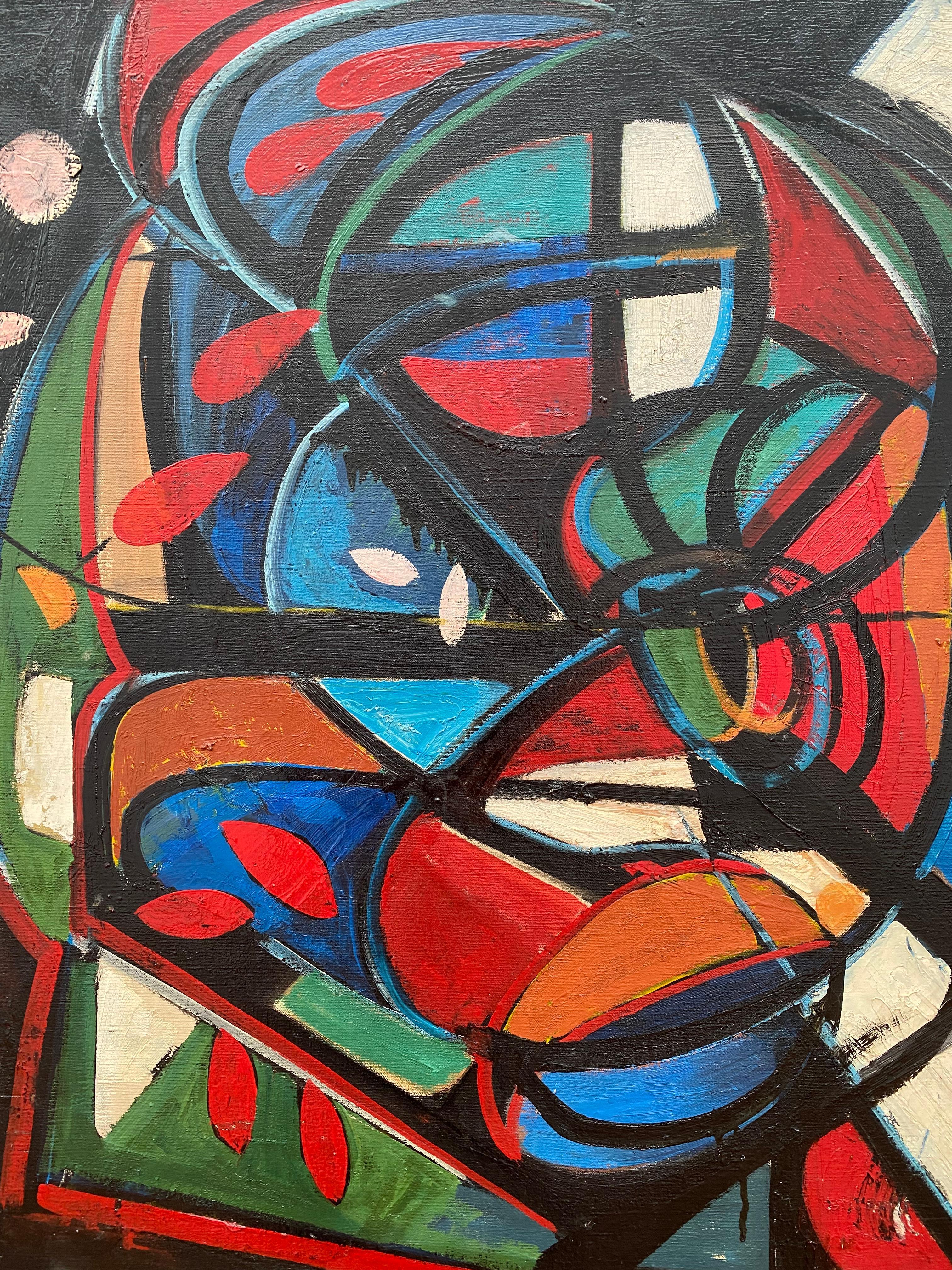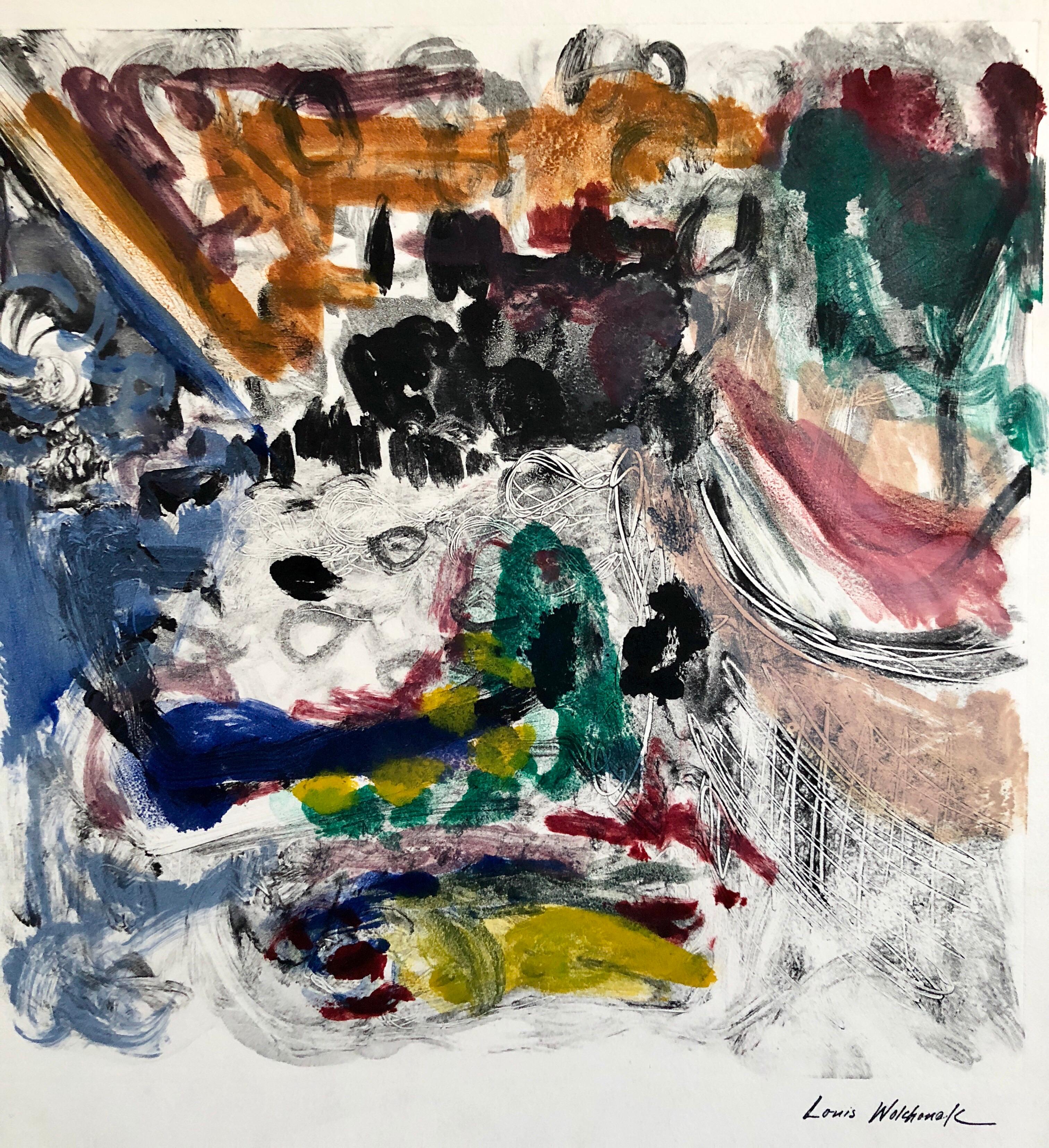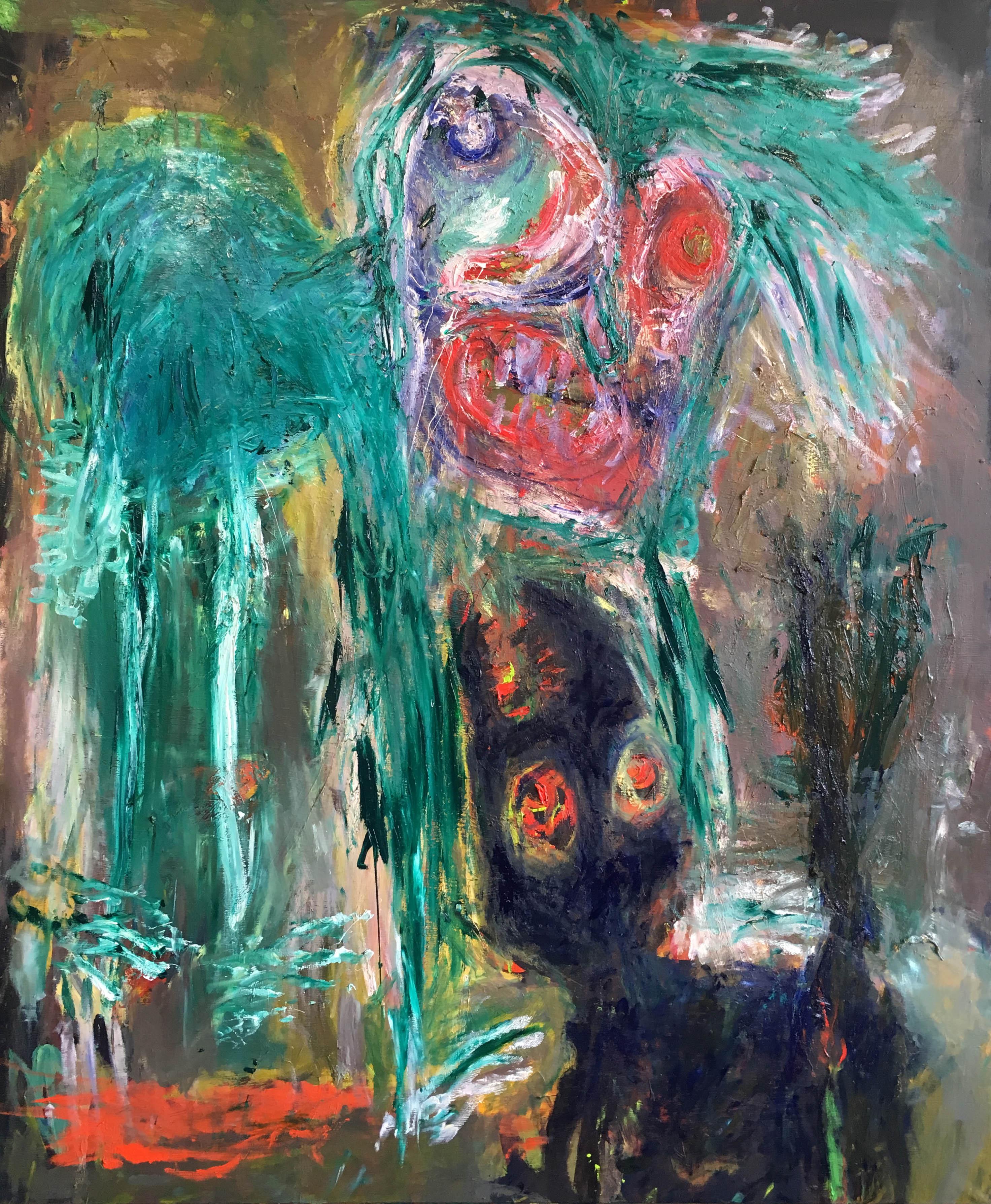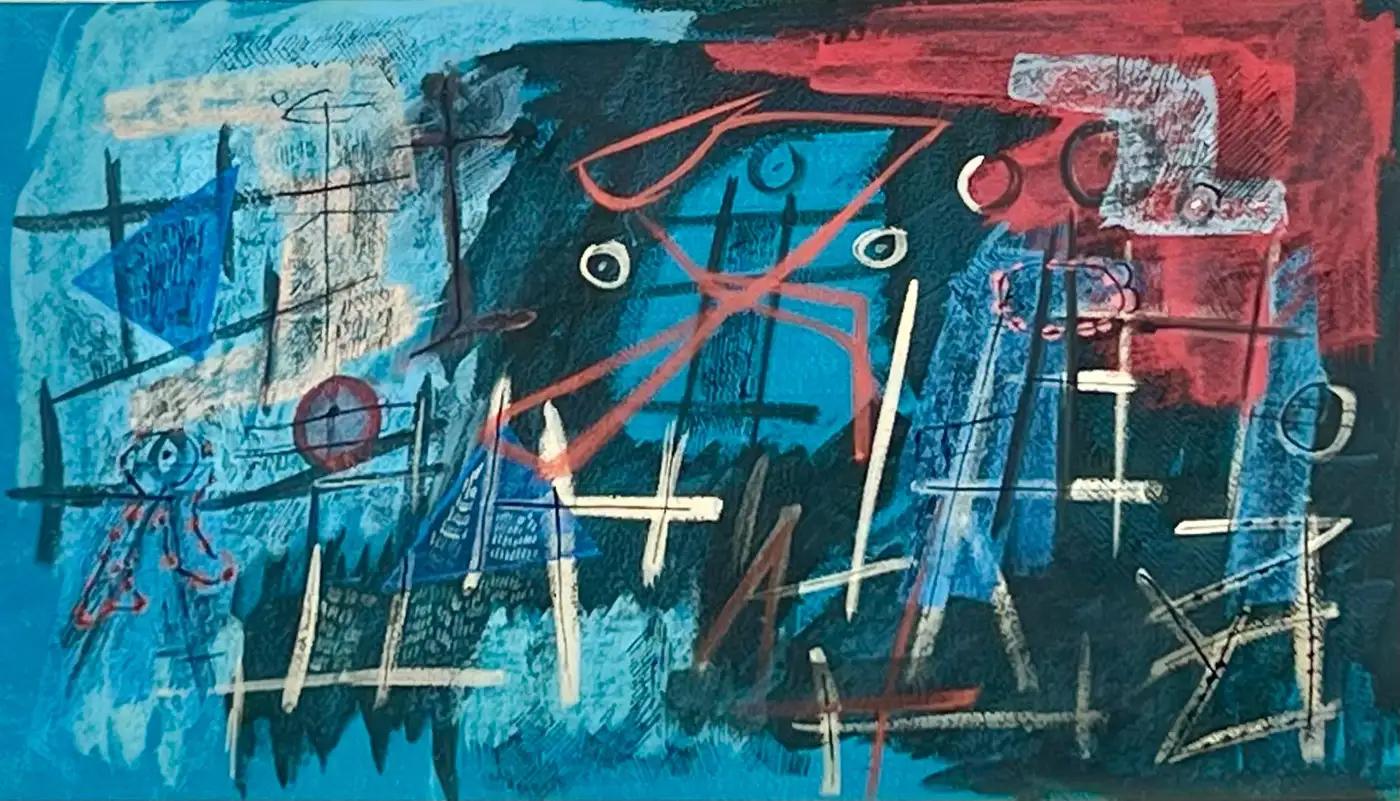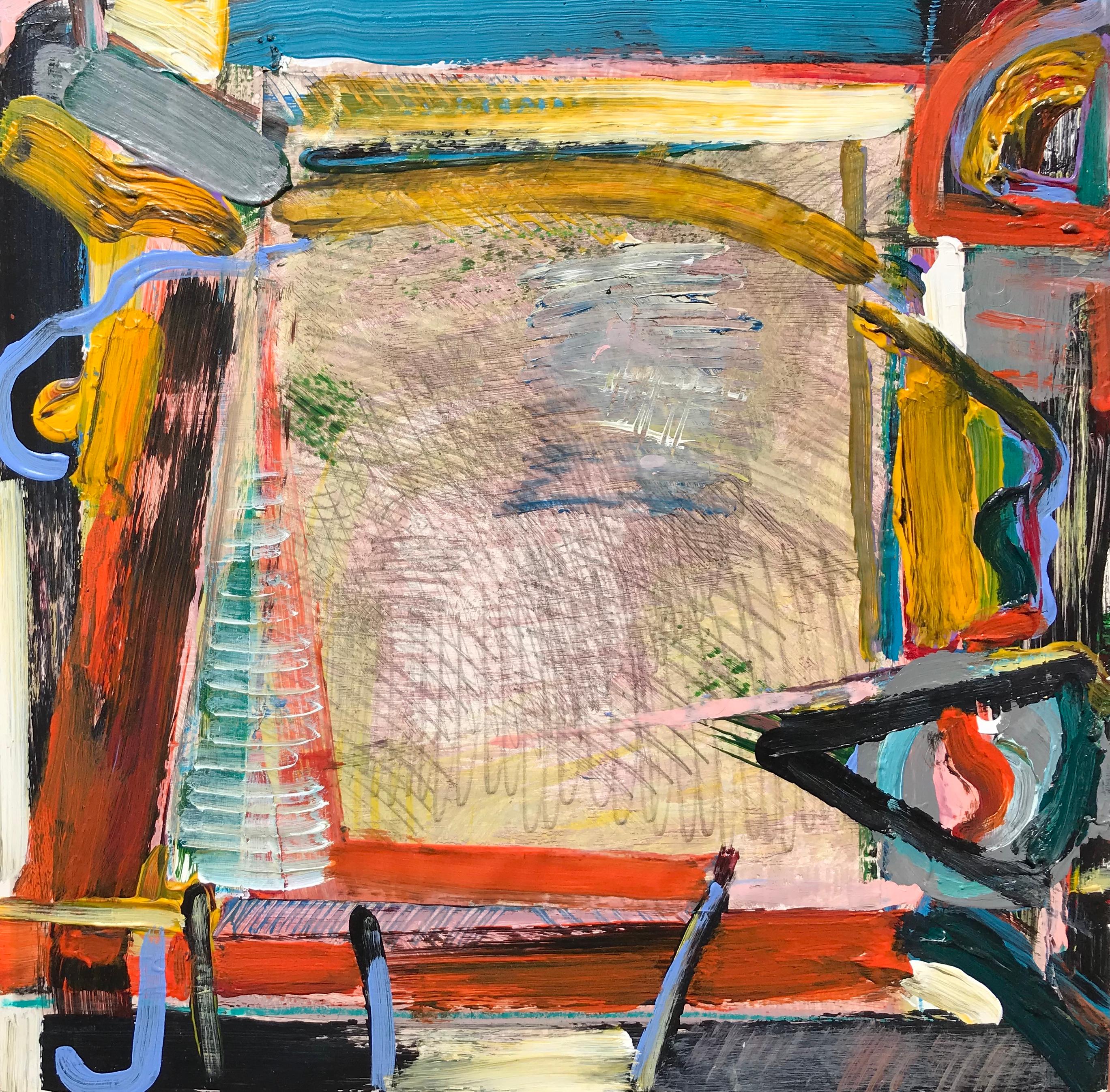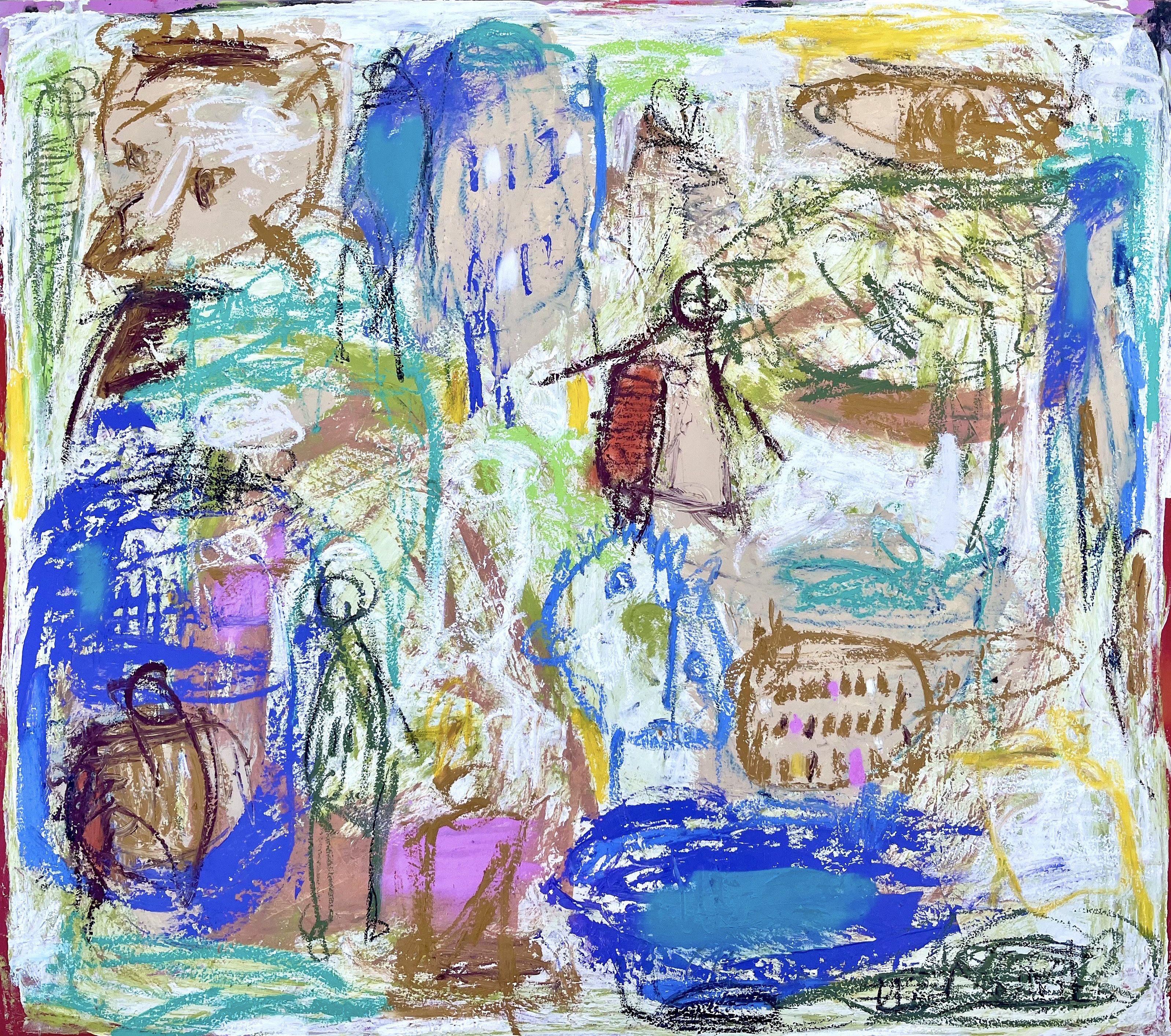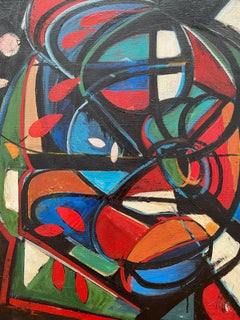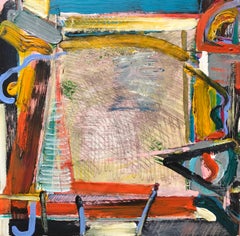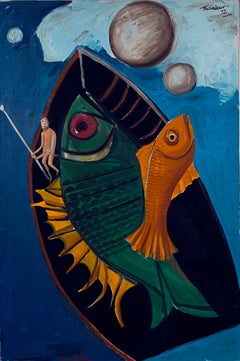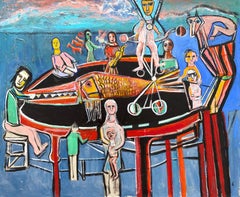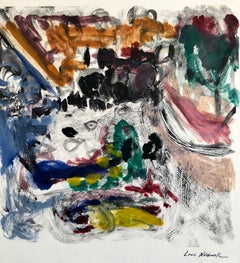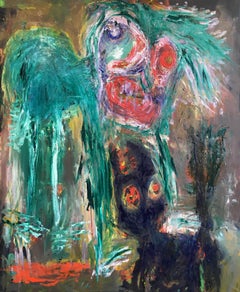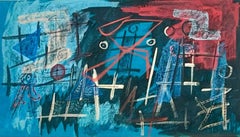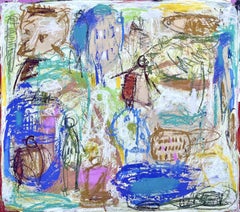Items Similar to “Study for Feast of the Leviathan”
Want more images or videos?
Request additional images or videos from the seller
1 of 9
Nahum Tschacbasov“Study for Feast of the Leviathan”1955
1955
$2,560
$3,20020% Off
£1,990.66
£2,488.3320% Off
€2,263.41
€2,829.2620% Off
CA$3,688.23
CA$4,610.2920% Off
A$4,032.60
A$5,040.7520% Off
CHF 2,108.29
CHF 2,635.3620% Off
MX$48,511.50
MX$60,639.3820% Off
NOK 26,678.26
NOK 33,347.8320% Off
SEK 25,021.86
SEK 31,277.3320% Off
DKK 16,900.64
DKK 21,125.8020% Off
About the Item
Original mixed media study for the “Feast of the Leviathan” painting done by Nahum Tachacbasov a year later in 1956. Illustrated in the Don Goddard book on Tschacbasov page 42 and 43. The study is signed twice lower left and right and dated 1955. Condition is excellent. Presently unframed. Framing options are available. Recently professionally matted in off white mat. Overall matted size is 30 by 24 inches. Provenance: The estate of the artist Nahum Tachacbasov.
Biography :
Russian-American artist Nahum Tschacbasov (1899-1984) is known for his cubo-surrealistic works which feature a strong psychological element. Some of his work bears a resemblance to work of another Russian-American artist--David Burliuk. He was somewhat of a late starter, moving to Paris in 1932 to study under Adolph Gottlieb, Marcel Gromaire and Fernand Leger. He had his first exhibition in Paris in 1934. He then returned to the US where he joined Rothko and Gottlieb at the Galery Seccession. He was one of the co-founders of The Ten, a group of social conscious abstract painters which included Rothko, Gottlieb, Joseph Solman and Ilya Bolotowsky, among others.
In 1944, he began to work at Stanley Hayter's Atelier 17, a center for surrealistic ideas. Between 1936 and 1943, he had five one-man exhibitions at the ACA Galleries and participated in five group shows. He also exhibited at the Whitney, the Pennsylvania Academy of Fine Arts, the Knox Albright Museum, the Chicago Institute of Fine Art and Corcoran, among others. His work can be found in the permanent collections of the Met, the Whitney, the Brooklyn Museum and the Jewish Museum.
Tschacbasov has been the subject of two recent retrospective at Fletcher Gallery, Woodstock, NY and by my own gallery, Arthur Kalaher Fine Art, Southampton, NY. He was the subject of a retrospective at the National Arts Club entitled: "Nahum Tscacbasov: A Retrospective” in 2013.
- Creator:Nahum Tschacbasov (1899-1984, American)
- Creation Year:1955
- Dimensions:Height: 25 in (63.5 cm)Width: 19.5 in (49.53 cm)Depth: 0.25 in (6.35 mm)
- Medium:
- Movement & Style:
- Period:
- Framing:Framing Options Available
- Condition:
- Gallery Location:Southampton, NY
- Reference Number:1stDibs: LU14114476132
About the Seller
5.0
Platinum Seller
Premium sellers with a 4.7+ rating and 24-hour response times
Established in 1977
1stDibs seller since 2013
550 sales on 1stDibs
Typical response time: <1 hour
- ShippingRetrieving quote...Shipping from: Sarasota, FL
- Return Policy
Authenticity Guarantee
In the unlikely event there’s an issue with an item’s authenticity, contact us within 1 year for a full refund. DetailsMoney-Back Guarantee
If your item is not as described, is damaged in transit, or does not arrive, contact us within 7 days for a full refund. Details24-Hour Cancellation
You have a 24-hour grace period in which to reconsider your purchase, with no questions asked.Vetted Professional Sellers
Our world-class sellers must adhere to strict standards for service and quality, maintaining the integrity of our listings.Price-Match Guarantee
If you find that a seller listed the same item for a lower price elsewhere, we’ll match it.Trusted Global Delivery
Our best-in-class carrier network provides specialized shipping options worldwide, including custom delivery.More From This Seller
View All“Untitled Abstract”
By Nahum Tschacbasov
Located in Southampton, NY
Original mid-century modern abstract oil on canvas painting by the well known Russian/American artist Nahum Tschacbasov. Signed lower right and dated 1945. Condition is very good. P...
Category
1940s Abstract Expressionist Abstract Paintings
Materials
Canvas, Oil
“Untitled”
By Iliyan Ivanov
Located in Southampton, NY
Original acrylic on fiberboard painting by the Bulgarian/American artist, Iliyan Ivanov. Signed, and dated verso, 2012. Untitled. This painting is part of the “Memories of Unfinis...
Category
2010s Abstract Expressionist Abstract Paintings
Materials
Acrylic, Fiberboard
$1,480 Sale Price
20% Off
"Big Catch"
By Nahum Tschacbasov
Located in Southampton, NY
Oil on canvas
Signed and dated top right 1972
Painting exhibited at the National Arts Club, New York
Nahum Tschacbasov Retrospective, June 2013
Category
1970s Post-Modern Abstract Paintings
Materials
Oil, Canvas
$30,400 Sale Price
20% Off
“Balancing Act”
By Nahum Tschacbasov
Located in Southampton, NY
Original acrylic on canvas painting by the well known Russian/American artist Nahum Tschacbasov. Unsigned. Circa 1982. Artist inventory label verso top right. Estate stamp verso. ...
Category
1980s Post-Modern Figurative Paintings
Materials
Canvas, Acrylic
$3,840 Sale Price
20% Off
“Untitled”
By Nahum Tschacbasov
Located in Southampton, NY
Early oil on canvas painting by the well known American artist, Nahum Tschacbasov done in the “Social Realism” period of the artist’s career. Signed lower left. Original artist inventory label on stretcher verso dates the painting to 1937. Condition of the painting is very good. The painting is housed in a contemporary version of a House of Heydenryk frame that measures overall 14.25 by 27.25 inches. Provenance: Estate of the artist Nahum Tschacbasov.
Nahum Tschacbasov
Biography :
Russian-American artist Nahum Tschacbasov (1899-1984) is known for his cubo-surrealistic works which feature a strong psychological element. Some of his work bears a resemblance to work of another Russian-American artist--David Burliuk. He was somewhat of a late starter, moving to Paris in 1932 to study under Adolph Gottlieb, Marcel Gromaire and Fernand Leger. He had his first exhibition in Paris in 1934. He then returned to the US where he joined Rothko and Gottlieb at the Galery Seccession. He was one of the co-founders of The Ten, a group of social conscious abstract painters which included Rothko, Gottlieb, Joseph Solman and Ilya Bolotowsky, among others.
In 1944, he began to work at Stanley Hayter's Atelier 17, a center for surrealistic ideas. Between 1936 and 1943, he had five one-man exhibitions at the ACA Galleries and participated in five group shows. He also exhibited at the Whitney, the Pennsylvania Academy of Fine Arts, the Knox Albright Museum, the Chicago Institute of Fine Art and Corcoran, among others. His work can be found in the permanent collections of the Met, the Whitney, the Brooklyn Museum and the Jewish Museum.
Tschacbasov has been the subject of two recent retrospective at Fletcher Gallery, Woodstock, NY and Arthur...
Category
1930s American Modern Figurative Paintings
Materials
Canvas, Oil
"Untitled"
By Nahum Tschacbasov
Located in Southampton, NY
Oil on canvas
Signed and dated lower right 1982
Painting exhibited at the National Arts Club, New York
Nahum Tschacbasov Retrospective, June 2013
Category
1980s Post-Modern Paintings
Materials
Oil, Canvas
$15,200 Sale Price
20% Off
You May Also Like
Abstract Expressionist Oil Painting Modern Monoprint WPA Jewish Artist
By Louis Wolchonok
Located in Surfside, FL
Louis Wolchonok was a social realist painter and member of the Woodstock Art Association. His work was exhibited at the Whitney Museum of American Art, the National Academy of Design...
Category
20th Century Modern Abstract Paintings
Materials
Paper, Oil
Supper is not over ! - Julien Wolf, Contemporary Expressionist Painting
By Julien Wolf
Located in Paris, FR
Oil on canvas
2019
Signed
Unique work
Julien Wolf is a French painter who was born in Strasbourg in 1981, France.
In 2007, he graduated and obtained the DNSEP Art and Decorative Art section...
Category
2010s Expressionist Figurative Paintings
Materials
Canvas, Oil
Abstract Composition
By Louis Schanker
Located in Wiscasett, ME
Tempura on heavy paper, signed and dated 1945 lower left. The piece measures 23" x 30" including the frame and presents very well overall.
Provenance:
Willard Gallery, NYC
Brad...
Category
1940s Abstract Abstract Drawings and Watercolors
Materials
Tempera, Watercolor
La cuisine, Painting, Oil on Canvas
By Laurent Proneur
Located in Yardley, PA
Savor the flavors, delight in the feast, From crispy fries to the juiciest roast beast. A symphony of tastes, a culinary delight, in the kitchen, a true pleasure, morning, noon, a...
Category
2010s Abstract Expressionist Paintings
Materials
Oil
Seti’s Banquet
Located in New York, NY
Stefanelli’s "Seti’s Banquet" is a lush celebration, a decadent feast of a pharaoh. In this period of time many of Stefanelli’s works are focused on interpreting historical narrative...
Category
1980s Abstract Expressionist Abstract Paintings
Materials
Canvas, Acrylic
Rare Israeli Modernist Figurative Abstract Gouache Painting
By Yosl Bergner
Located in Surfside, FL
Mixed Media, Watercolor and Gouache
Bergner, Yosl (Vladimir Jossif) (b Vienna, 13 Oct 1920). surrealist, surrealism. belongs to the generation of people uprooted from childhood land...
Category
20th Century Expressionist Abstract Paintings
Materials
Mixed Media
